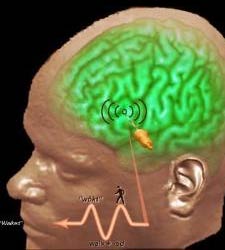Nature of Psycholinguistics are discussed here.Language has been perhaps the most important influence on the directions in which man has developed. Although other members of the animal kingdom, for examples bees and dolphins have highly developed communication systems, these systems are of different order. The essence of human language, which distinguishes it from the communication systems of other animals, is the quality of abstraction. This quality allows man to use language for planning as well as for conversing.
Man’s development of written language systems has, of course, provided him with the means for a relatively unchanging and accurate external memory. Moreover, al-though the real world can be interpreted in many different ways, every human language, both written and spoken, does so in an extremely limited, relatively precise fashion. Thus, all the writers or speakers of a particular language have common points of reference.
The study of language as a characteristic behavior of the human species is embraced by the field of psycho-linguistics. As the term implies, the field of psycho-linguistics is essentially an outgrowth of two disciplines, psychology and linguistics, though theorists and exprementers in other fields continue to participate in the investigation of the psychology of language.
The field still represents a variety of approaches that attempt to elucidate various facets of human language and of related behavior according to the model chosen and the investigation undertaken. As in most fields, there is, unfortunately, no single ultimate experimental question that, once answered, provides the answers to all the other questions. Linguistics is the study of language as a system of highly patterned behavior.
The purpose of most structural linguistic studies has been to describe a language itself—that is, to record, in the most precise and economical way possible, what is pertinent about that language. Such language descriptions are clearly taxonomic enterprises, consisting of highly ordered sets of rules that provide an accurate picture of how the language works.
Linguistics is the study of language as a system of highly patterned behavior. The purpose of most structural linguistic studies has been to describe a language itself—that is, to record, in the most precise and economical way possible, what is pertinent about that language. Such language descriptions are clearly taxonomic enterprises, consisting of highly ordered sets of rules that provide an accurate picture of how the language works.
The subject matter of psychology has traditionally been the study of human behavior in general, or, more specifically, the investigation of the general principles that underlie human behavior. A glance at any university catalog will quickly show the variety of interests in the field of psychology. Included as basic courses in a sound psychology curriculum are such topics as learning, motivation, perception, pathology, and social psychology. If the psychology of language, or psycholinguistics, does not appear as a separate course, then certainly it will appear as a subtopic in the larger field of social psychology.
Psycholinguistics is a field of study that combines principles of psychology and linguistics to understand how language is acquired, produced, and understood. Here’s a tabular guide to outline its key concepts:
| Aspect | Description |
|---|---|
| Definition | Study of the psychological and neurobiological factors that enable humans to acquire, use, and understand language. |
| Key Focus Areas | Language acquisition, language production, language comprehension, language disorders. |
| Language Acquisition | Study of how children learn language, including the stages of language development and the role of innate abilities and environmental factors. |
| Language Production | Examines how people produce spoken or written language, including the processes of word selection, syntax arrangement, and articulation. |
| Language Comprehension | Focuses on how individuals understand spoken or written language, including the processing of words, sentences, and discourse. |
| Language Disorders | Studies various language impairments, such as aphasia, dyslexia, and specific language impairment, including their causes and treatments. |
| Research Methods | Utilizes experimental techniques, observational studies, brain imaging methods, and computational models. |
| Theoretical Perspectives | Includes behaviorist, nativist, cognitive, social-interactionist, and neurolinguistic approaches. |
| Applications | Relevant in education, artificial intelligence, neuroscience, speech therapy, and language policy. |
This table gives a high-level overview of the field, illustrating its breadth and interdisciplinary nature.
Conclusion
Psycholinguistics offers valuable insights into the nature of language and the intricate processes that enable us to communicate effectively. By studying language acquisition, comprehension, and production, researchers in this field continue to unravel the mysteries of the language-mind connection. Through their work, we gain a deeper understanding of our own linguistic abilities and the fundamental role language plays in our lives.
